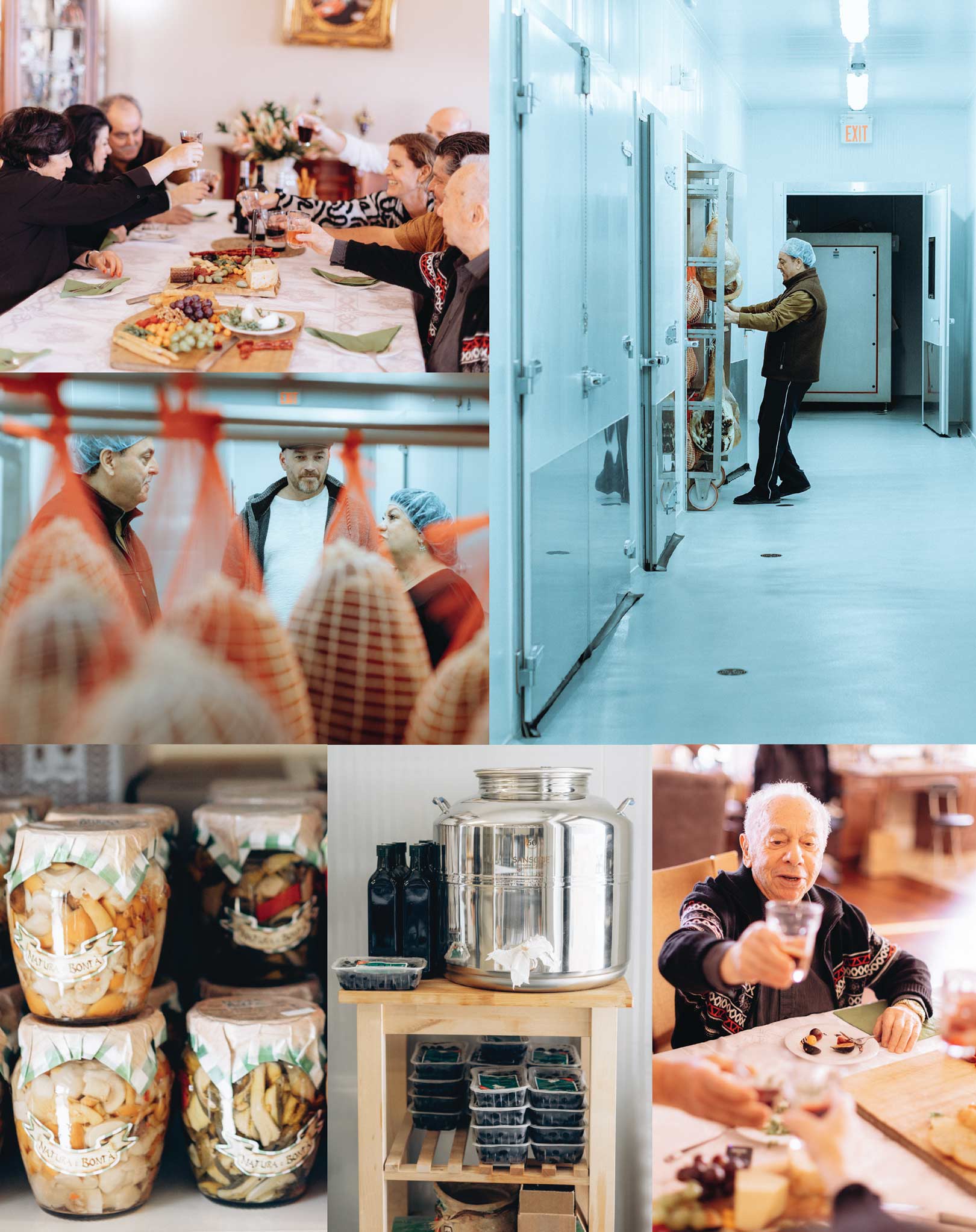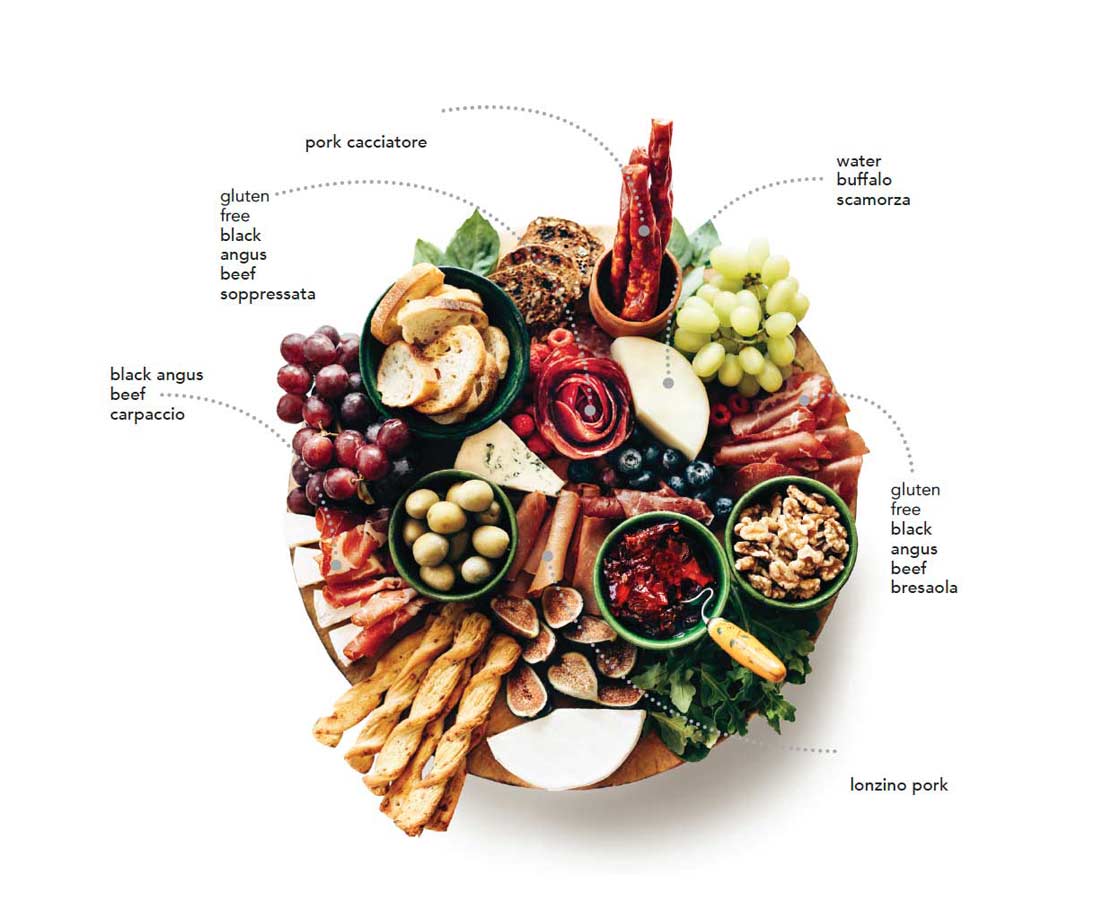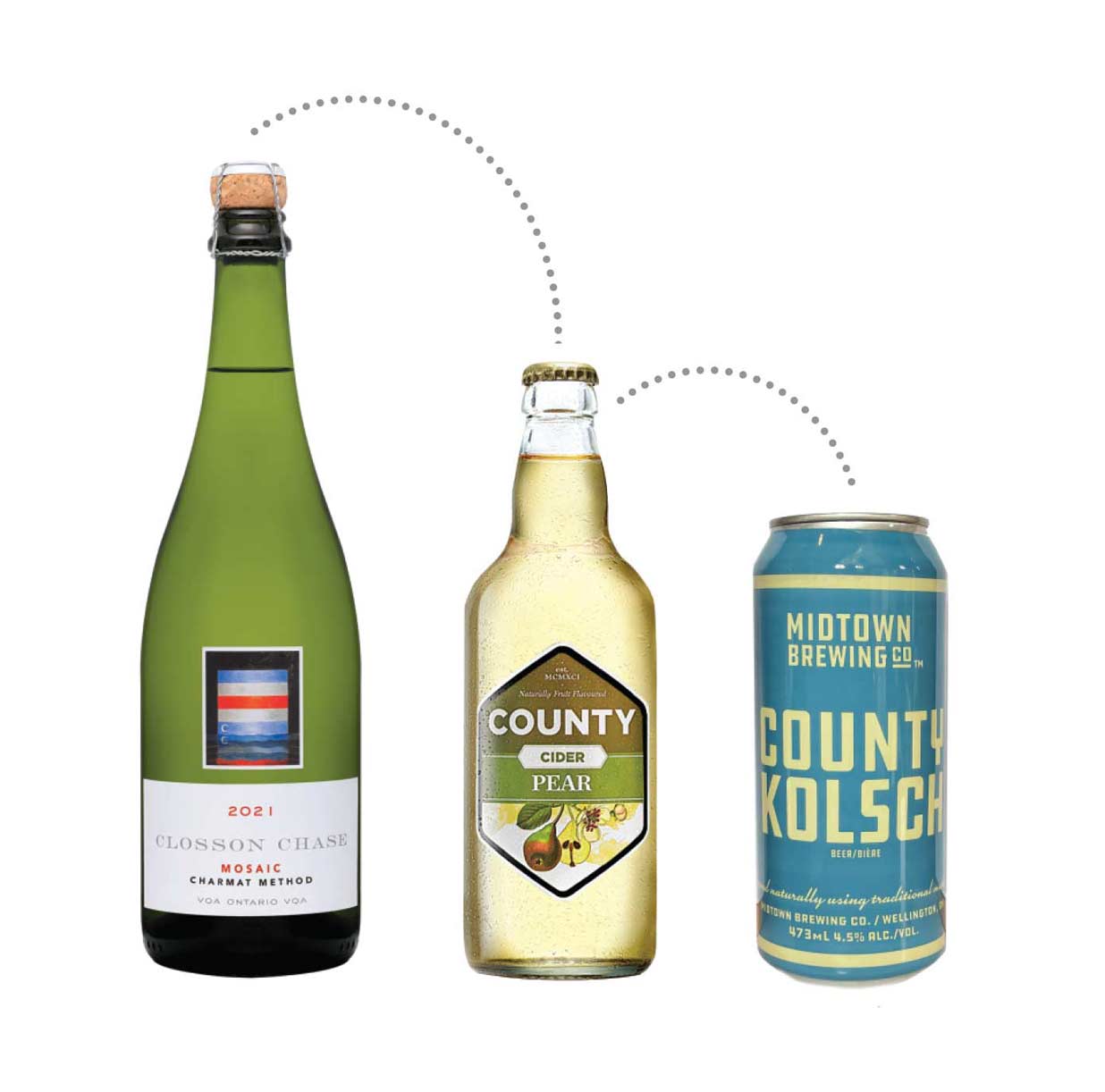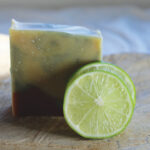



A purist and a perfectionist, Frank Abballe has built La Cultura Salumi on a lifetime of knowledge
At La Cultura Salumi, crafting the finest cured meats and authentic water buffalo cheeses is a labour of love passed down through the generations and shared by one very special blended family.
The paths we take in life are rarely straight. For Frank Abballe, his dream had always been to make great, truly authentic salumi, but the path would lead him first into construction, then to a more quotidian meat processing style, until finally, with wife, Jane – and Jane’s father, Leon, a spry 91 – at his side, he would arrive at his destination: La Cultura Salumi, near Belleville. A destination bred in the bone, as both his grandfather and father were in the livestock business, buying and selling cattle in Italy.
Frank was a toddler in 1962, when his family left Lazio, Isola del Liri, east of Rome for Canada, where life would deliver both opportunities and blows, including the early death of his first wife. But in time, he would meet and marry Jane, a woman on a winding path of her own, from Kyiv to Toronto. But it was on a trip to Naples, that Frank’s destination came into view. Tasting true mozzarella di bufala, he wondered why it wasn’t available in Canada.
Some say – heck, it might have been Oprah – that there is no such thing as luck, there is only the moment of opportunity meeting preparation, so when Frank came across a water buffalo farm for sale in Vermont, he jumped.
The herd of 750 head needed some cleaning up, so Frank culled it down to 350 of the best milkers, while learning how to make real mozzarella di bufala. Soon after, Frank sold the Vermont farm and began shipping the herd north to a farm near Saint-Hyacinthe, Québec. It was a huge undertaking. It’s at this farm with his partner Mario Maciocia, a third generation livestock broker that Frank produces the fantastic water buffalo cheeses and yogurt on offer at La Cultura.
The couple then began searching for the right place to build the salumeria of their dreams. Truthfully, it was the bresaola that chose the space for them. Because bresaola is a labour-intensive product requiring daily attention – monitoring humidity and temperature while aging – it was vital to live onsite, and finding a municipality that would permit Frank to build a live-work meat processing facility would prove challenging, until they spoke with the folks in Quinte West, who welcomed their unique vision.
Designed by the couple, the La Cultura manufacturing facility and fine food shop occupy the first floor, with the family home above. It took about five months to build, and during that time, Frank was busy in a kitchen provided by Belleville’s Loyalist College, working on his recipes. With a chuckle and a bit of a sidelong glance, Jane explains; “This was supposed to be Frank’s retirement project!” So much for that. By 2012 La Cultura Salumi was finally in business.
For Frank, the superior quality of the finished salumi starts with the meat. He only buys from federally-inspected processing plants, which he explains are maintained to a much higher standard than those that are provincially-inspected. He works with beef, pork, duck, ostrich from Struis – vogel Ranch in PEC, lamb, and unique Iberico pork from Spain, creating specialties from the various meats as they are available. For example, when he has lamb and duck, he makes a unique prosciutto, augmenting his permanent lineup of salumi made from black angus beef from Creekstone Farms in Kansas and Canadian beef from Alberta and duroc pork from Conestoga Meats in Kitchener.
But it all started with water buffalo and beef bresaola, which is a very lean-aged salumi that’s low-sodium, and vitamin-, iron-, and protein-rich. The meat is aged inside a natural hog or collagen casing and must be inspected three or four times each day. With five drying rooms, that’s a lot of quality control, and it’s this level of dedication and respect for tradition that makes La Cultura products so special.
Commercial deli meats are often prepared with water or brine and fillers: starches and milk powder. “It might be less expensive,” says Frank. “But you’re paying for water.” At La Cultura, however, much of a meat’s original moisture – up to 50 percent – is drawn out, giving the salumi a natural cure. The only thing Frank adds are the spices he imports from Italy.
“Cultura” is Italian for culture, and the name refers to the traditional food culture surrounding salumi, but also to the live cultures that are required to ferment meats in the traditional way. A purist and perfectionist, Frank sources everything – even the cotton twine and sleeves – from Italy to craft his authentic Old World salumi. The facility is more pristine than an operating theatre, and every inch of the space is precisely cooled for the safest food handling possible. “I built it and maintain it to federal standards,” Frank says. “But I choose to limit my distribution to within Ontario.” Still, there are other types of expansion in the works; Frank is working on a water buffalo gouda – perfect with a slice of salumi.
To Build a Better Board
The charcuterie board has come a long, long way from cubes of orange cheddar and sliced deli meats of unspecified origins. Here’s our grazing board DIYS. (That’s Do It Yourself Spectacularly!)
But wait, do we even say “deli meat” anymore? No, we do not; it’s “salumi.” Do we even say charcuterie board? Well, yes and no; we have officially entered the age of the Grazing Board, but, either way you slice it, it’s a far cry from the cooked turkey loaf and tinned Vienna sausage many of us considered pretty damn fancy in the day.
We spent a delicious day with Frank and Jane Abballe, in their spacious home kitchen above the La Cultura HQ, wining, dining, and discussing what makes a great board. And now, we bring you the five pillars of a great grazing board.
BALANCE AND VARIETY | It’s important to balance flavours. The board should have some spicy meats and some mild; some smoky and some salty; and a variety of dry-cured, fermented, hot- and cold-smoked meats – pork, poultry, beef – and fish. La Cultura’s culatella is considered “the king of salumi” for its rich aroma and silky texture; their carpaccio is a tartar-lover’s dream, Frank’s pork cacciatore can be mild or spicy.
The same holds true for the cheeses. If possible, showcase the four milks – cow, water buffalo, goat, and sheep – as well as a variety of styles: hard, aged, soft, fresh, bloomy, washed-rind, it’s almost endless! Cheeses can be soft and fresh, such as water buffalo mozzarella or the slightly more aged scamorza; hard, well-aged and sharp such as sheep pecorino. Some cheeses are inoculated with a mould, and might have a velvety bloomed rind or veins of blue running through. Make sure there’s something on the board for all palates: from creamy and mild to a cheese that bites back.
INCLUSIVITY | It’s nice when we remember those at the table with dietary restrictions. Try to include a vegan cheese made from nuts; or a vegetarian cheese that’s made with plant rennet. Also, some folks who are lactose-intolerant enjoy some aged cheeses where the microbes have done all the digesting for them. Always include a few gluten-free crackers, or breadsticks, and just to be safe, rather than sprinkling nuts all around the board, serve them in their own little dishes to avoid cross-contamination. Many folks don’t eat pork, but love beef and poultry, so include a choice. Unlike most other brands, La Cultura doesn’t add any fillers to their meats, so they’re naturally gluten-free.
AESTHETICS AND ABUNDANCE | Make your board look like a renaissance painting. Employ your killer skills in composition and colour theory. Use cake pedestals of varying sizes to add height; pick a colourful selection of fruits, olives, pickles and spreads. Really load that board to groaning: let bunches of grapes cascade over the edge, leave a trail of olives spilling out from their dish onto the salumi, place cheeses on the board in big chunks with a knife lying beside. And remember: don’t place crispy things beside drippy things, because crackers piled next to pickles will get soggy.
3 Perfect Pairings
Knowing what beverage to serve with a cheese and charcuterie board is just as important as the selection of meats, cheeses and accompaniments. Pair the wrong wine, beer, or cider with your masterpiece and the flavours can compete or fight with each other. Sip the wrong red after a cracker lovingly topped with a fine bit of smoked fish and you’ll think you’ve just eaten a penny, or wash that pickle down with a soft white and you’ll leave your taste buds in a state of confusion! We turned to sommelier Astrid Young, Wine Director at Merrill House in Picton, to recommend a beer, cider, and sparkling wine for some very harmonious nibbling.
THE WINE | Closson Chase “Mosaic” Charmat Method Sparkling Wine, VQA Ontario 2021
Expect a fine, persistent mousse with lifted aromas of wildflowers, freshly sliced Asian pear, and a slightly exotic note of vanilla, anise, and brioche. On the palate, expect a kiss of sweet orchard fruit over a whisper of key lime. Finishes with a wet stone mineral note and subtle tang of lemon zest.
PAIRING | The wine is an all-around winner with just about everything you could pair with it. Fresh, light-bodied, and understated, you’ll find the fruit will burst to life when paired with the salty, savoury delights on the board. There are certainly no “wrong” answers here, but I like to work my way around the board and take my time with each morsel, noting how the wine changes when paired with each item. Walnuts and fresh cheeses, like the slightly salty water buffalo scamorza, will coax out a rich yeastiness in the wine. Its lively mousse is the perfect foil for those olives, the bloomy rind cheese – your palate will be singing “That’s Amore!”
THE CIDER | County Cider Co. “County Pear” Cider, PEC
Crafted with a base of apple cider made from more than 12 varieties of estate-grown apples and blended with natural essences, expect warm aromas of poached pear, vanilla, and spice notes on the nose leading to a crisp, fresh palate, finishing with tart acidity perfectly balanced with a tangy sweet and sour note.
PAIRING | Complex flavours and high-fat foods require both sweetness and acidity – neither in excess as too much of either element would instantly overpower some of the more delicate flavours on the charcuterie board. Try the cider first with the soppressata to experience how the fruity sweetness tames the peppery heat and transforms it into a decadent mouthful.
THE BEER | Midtown Brewing Co. County Kolsch Wheat and pilsner form the base malts along with local hops. Enticingly juicy nose of stone fruit, grilled pineapple, and a spicy, slightly peppery note that echoes on the palate. The mouthfeel is remarkably rich, contrasting the freshness of the nose and finishing with lingering flavours of apricot, peach, and fresh pastry.
PAIRING | It was challenging to choose a single beer to pair with this lovely board, but the Kolsch ultimately won the day. I am a fan of matching texture to texture in pairings, and there is an intense, malty richness in the beer that turns richer and sweeter when paired with all the velvety gorgeousity of (especially) the carpaccio, the olives, lonzino, and the bloomy cheeses. It’s the ideal beer pairing for such a diverse board; you’ll find that the fattier meats will bring out the malty sweetness of the beer and the leaner, tangier foods will become less edgy. It’s truly a 1 + 1 = 3 kind of match!
Story by:
Signe Langford
Photography by:
Mira Knott




